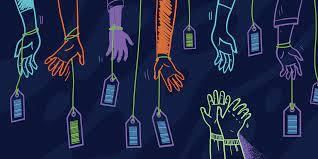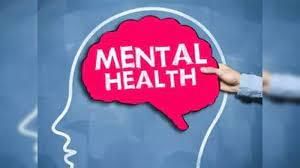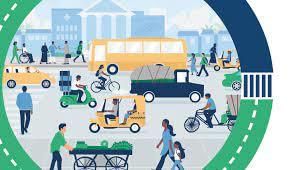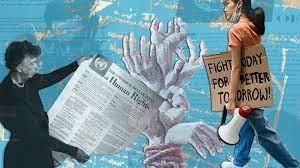Indian Society & Social Justice - 6 | Current Affairs & Hindu Analysis: Daily, Weekly & Monthly - UPSC PDF Download
Human Trafficking

Context
- Orchestrated by Interpol, Operation Storm Makers II sheds light on the growing network of fraudulent schemes linked to human trafficking.
- The operation involved the collaboration of law enforcement agencies in 27 countries across Asia and other regions.
- The primary focus was to combat human trafficking and migrant smuggling, highlighting the international nature of these criminal activities.
What are the Major Highlights of Operation Storm Makers II?
- Arrests and Charges: The operation resulted in the apprehension of 281 individuals across various countries on charges spanning human trafficking, passport forgery, corruption, telecommunications fraud, and sexual exploitation.
- Rescues and Investigations: 149 human trafficking victims were rescued, initiating over 360 investigations, a substantial number of which are currently under active pursuit by law enforcement agencies.
- Telangana Case: According to Interpol, the Telangana police registered one of the first cases in India of human trafficking committed for the purpose of forcing victims to commit cyber fraud.
- An accountant was lured to a Southeast Asian country and forced into participating in online fraudulent schemes under inhumane conditions.
- His release was secured after a ransom payment.
What is the Status of Human Trafficking in India?
- Definition: Human trafficking involves the illegal trade and exploitation of individuals, often for forced labor, sexual exploitation, or involuntary servitude.
- Process: It encompasses recruitment, transportation, transfer, harboring, or receipt of people through methods like threat, force, coercion, abduction, fraud, or deception for exploitation purposes.
- Status in India (2022):
- Victims Identified: India recorded over 6,500 human trafficking victims in 2022.
- Demographics: 60% of the victims were women and girls.
- Constitutional & Legislative Framework in India:
- Constitutional Prohibition: Article 23 of the Indian Constitution prohibits human trafficking and forced labor (begar).
- Immoral Traffic (Prevention) Act, 1956 (ITPA): Primary legislation targeting trafficking for commercial sexual exploitation.
- Protection of Children from Sexual Offences (POCSO) Act, 2012: Focuses on safeguarding children from sexual abuse and exploitation.
- Other Laws: Various laws address trafficking, including the Prohibition of Child Marriage Act, Bonded Labour System (Abolition) Act, Child Labour (Prohibition and Regulation) Act, Transplantation of Human Organs Act, and pertinent sections in the Indian Penal Code.
- State-Specific Legislation: States have enacted laws; e.g., The Punjab Prevention of Human Smuggling Act, 2012.
- International Conventions:
- UN Convention (UNCTOC): India ratified this convention, including a Protocol on Prevention, Suppression, and Punishment of Trafficking in Persons.
- Criminal Law Amendment Act, 2013: Aligns with UNCTOC provisions, providing a precise definition of human trafficking.
- SAARC Convention on Trafficking: India ratified this convention to combat trafficking in women and children.
- CEDAW: India ratified the Convention on the Elimination of All Forms of Discrimination Against Women in 1993.
- Legislative Measures: Legislative actions, such as the Criminal Law Amendment Act, 2013, were taken to comply with international protocols and conventions, ensuring a comprehensive legal framework to address human trafficking in India.
What are the Major Causes and Impacts of Human Trafficking?
- Causes:
- Poverty and Economic Disparities: Economic hardships drive individuals into vulnerable situations, making them susceptible to promises of better opportunities that traffickers exploit.
- Lack of Education and Awareness: Limited education and awareness about the risks of trafficking leave individuals unaware of the tactics used by traffickers, making them easy targets.
- Conflict, Instability, and Displacement: Areas affected by conflict, political instability, or natural disasters create environments ripe for exploitation as people seek refuge or stability elsewhere.
- Social Marginalization and Discrimination: Marginalized groups, including women, children, migrants, and minorities, are often more vulnerable due to social discrimination and lack of support structures.
- Demand for Cheap Labor and Services: Industries seeking low-cost labor or services sometimes turn a blind eye to exploitative practices, perpetuating trafficking for labor exploitation.
- Online Exploitation and Technology: Technological advancements have facilitated online recruitment, making it easier for traffickers to lure victims through various deceptive means.
- Impacts:
- Trauma and Psychological Effects: Victims endure severe psychological trauma, including depression, anxiety and a sense of betrayal, leading to long-term mental health issues.
- Physical Health Complications: Victims often suffer physical abuse, neglect, and inadequate healthcare, leading to various health complications and long-term injuries.
- Loss of Freedom and Rights: Trafficked individuals lose their autonomy and basic human rights, often living in constant fear, subjected to control and exploitation.
- Social Stigma and Isolation: Survivors face social stigma and ostracization, making it challenging to reintegrate into society even after being rescued.
- Global Consequences: Human trafficking fuels a global criminal network, affecting countries' social fabric, economies, and international relations, undermining global human rights efforts.
Way Forward
- Prevention through Education and Awareness: Implement comprehensive education programs to inform communities, especially vulnerable groups, about the risks and tactics of traffickers.
- Raise awareness through campaigns, workshops, and media to promote vigilance and empower individuals to recognize and report trafficking.
- Strengthen Legal Frameworks: Enforce existing laws effectively and consistently while strengthening legislation to provide better protection for victims and harsher penalties for traffickers.
- Provide adequate resources and training to law enforcement agencies to combat trafficking and handle victim cases sensitively.
- Support and Rehabilitation for Victims: Establish comprehensive victim-centered support systems providing shelter, healthcare, counseling, and vocational training for survivors.
- Ensure reintegration programs that help survivors rebuild their lives and reintegrate into society without stigma.
- International and Regional Collaboration: Foster collaboration between countries to share information, intelligence, and best practices for effective cross-border cooperation.
- Ratify and implement international conventions and protocols aimed at combating human trafficking.
- Tackle Root Causes: Address poverty and economic disparities by creating sustainable livelihood opportunities and economic empowerment programs for vulnerable populations.
- Combat social discrimination and marginalization by promoting inclusivity, equality, and social support structures.
Mental Health Initiatives in India

Context
Recently, the Ministry of Health and Family Welfare has shed light on the initiatives aimed at addressing mental health concerns in the country.
What are the Highlighted Mental Health Initiatives?
- National Mental Health Programme (NMHP):
- The NMHP, initiated in 1982 and restructured in 2003, aims to modernize mental health facilities and upgrade psychiatric wings in medical institutions.
- Additionally, the District Mental Health Programme (DMHP) since 1996 has focused on community mental health services at the primary healthcare level , spanning 716 districts.
- DMHP provides outpatient services, counselling, psycho-social interventions, and support for severe mental disorders at community health and primary health centres.
- Together, they constitute a comprehensive strategy for mental health care in India.
- National Tele Mental Health Programme:
- NTMHP was launched in October 2022, to further improve access to quality mental health counselling and care services in the country.
- National Institute of Mental Health and Neuro Sciences (NIMHANS), Bengaluru is the National Apex Centre, coordinated activities of Tele MANAS across India.
- 25 States/UTs have established 36 Tele Mental Health and Normalcy Augmentation Systems (MANAS) Cells for extending mental health services.
- Handling a total of 63,806 calls on the helpline number.
- NIMHANS and iGOT-Diksha Collaboration:
- NIMHANS provides psychosocial support and training through the (iGOT)-Diksha platform.
- Online training for health workers conducted by NIMHANS on the (iGOT)-Diksha platform.
- Ayushman Bharat – HWC Scheme:
- The Ayushman Bharat - Health and Wellness Centres (AB-HWCs) are part of the Ayushman Bharat Programme.
- The program aims to provide a wider range of services, including preventive, promotive, curative, rehabilitative, and palliative care( a specialized medical approach that aims to improve the quality of life for people with serious illnesses).
- Operational guidelines on Mental, Neurological, and substance use disorders (MNS) at Health and Wellness Centres (HWC) have been released under the ambit of Ayushman Bharat.
- The Ayushman Bharat - Health and Wellness Centres (AB-HWCs) are part of the Ayushman Bharat Programme.
- Addressing Pandemic-Induced Mental Health Challenges:
- The Government has established a 24/7 helpline offering psychosocial support to various population segments.
- Issuance of guidelines and advisories catering to different societal groups.
- Advocacy through diverse media platforms to manage stress and anxiety, fostering a supportive environment.
- The Government has established a 24/7 helpline offering psychosocial support to various population segments.
- Financial Support for Mental Health Institutions:
- The District Mental Health Programme receives a fund allocation of Rs. 159.75 Crore for States/UTs under the National Health Mission for 2022-23.
Global Status Report on Road Safety 2023: WHO

Context
The World Health Organization's Global Status Report on Road Safety offers a thorough evaluation of global road traffic fatalities and the advancements achieved in minimizing them.
Key Highlights of the Report
- Global Reduction in Deaths: There's been a 5% decrease in global road traffic deaths per year, totalling over 1.19 million annually. Although it's a positive trend, the numbers remain alarmingly high.
- Youth and Children at Risk: Road accidents are the primary cause of death for individuals aged 5 to 29 years.
- India's Scenario: India has experienced an increase in road crash deaths from 2018 to 2021, with 1,53,792 deaths in 2021 compared to 1,50,785 in 2018.
- Progress and Challenges: While some countries have seen a reduction in road traffic deaths, disparities exist. Low and middle-income countries, despite having a minimal share of the world's vehicles, account for 90% of road traffic deaths.
- Vulnerable Road Users: Over half (53%) of road traffic fatalities are vulnerable road users, including pedestrians, motorcyclists, cyclists, and users of micro-mobility devices.
- Infrastructure and Safety Standards: There are concerns about inadequate road infrastructure, lack of pedestrian safety measures, and gaps in laws related to risk factors such as speeding, drunk driving, and vehicle safety features.
- Legislative Gaps and Recommendations: Only a small number of countries meet WHO's best practices for road safety laws. The impending doubling of the global motor vehicle fleet by 2030 emphasizes the urgent need for improved legislation and infrastructure to prevent road traffic deaths.
Road Safety in India
India faces a complex road safety landscape due to its rapid economic growth and the resultant surge in vehicle ownership. This growth brings convenience and progress, yet it also intensifies challenges in ensuring safety on the roads.
Challenges
- High Accident Rates:
- India, with only 1% of the world's vehicles, accounts for 11% of global road traffic deaths, leading to around 1.5 lakh lives lost annually.
- The disproportionate fatality rate suggests a critical road safety issue in the country.
- Vulnerable Road Users:
- Insufficient infrastructure and awareness put pedestrians, cyclists, and motorcyclists at a heightened risk.
- Incomplete or poorly designed roads contribute to a higher incidence of accidents involving those not in motorized vehicles.
- Speeding and Reckless Driving:
- Violating traffic rules and surpassing speed limits is a major cause of accidents.
- Behavioral problems like reckless driving significantly contribute to the overall road safety crisis.
- Inadequate Infrastructure:
- Poor road conditions, insufficient lane markings, and a lack of proper signage increase safety risks.
- Infrastructure deficiencies play a crucial role in ensuring safe road usage.
- Drunken Driving:
- Despite legal prohibitions, driving under the influence of alcohol or drugs remains a serious concern.
- The prevalence of driving under the influence poses a significant threat to road safety despite existing regulations.
- Weak Enforcement:
- Inadequate traffic monitoring and lax enforcement of road safety laws hinder progress.
- Despite regulations, ineffective enforcement diminishes the impact of laws, allowing a more lenient approach to road safety.
Steps to address these challenges
- Stricter Laws and Enforcement:
- The Motor Vehicles (Amendment) Act 2019 introduced more severe penalties for traffic violations, aiming to discourage dangerous driving.
- Enforcing stricter consequences for violations serves as a deterrent and encourages safer driving practices.
- Focus on Vulnerable Road Users:
- Initiatives such as constructing dedicated cycling lanes and pedestrian walkways prioritize the safety of vulnerable road users.
- Targeted improvements in infrastructure can safeguard individuals at a higher risk, creating a more secure environment for pedestrians and cyclists.
- Road Safety Awareness Campaigns:
- Promoting responsible driving habits and educating the public about traffic rules is of paramount importance.
- Raising awareness about safe driving practices and rules contributes to fostering a culture of responsible behavior on the roads.
- Investing in Infrastructure:
- Upgrading roads, installing proper signage and lighting, and implementing intelligent traffic management systems can markedly enhance safety.
- Infrastructure enhancements directly address challenges posed by inadequate roads and signage, contributing to improved road safety.
- Technological Advancements:
- Leveraging technology such as driver assistance systems and advanced traffic monitoring can elevate safety measures.
- Integrating technology into road safety measures allows for real-time monitoring and assistance, contributing to safer road conditions.
Way Forward
- Improving road safety requires a multi-pronged approach involving the government, civil society, and individual citizens. Continued efforts towards stricter enforcement, better infrastructure, public awareness campaigns, and technological advancements are key to creating safer roads for everyone.
- A comprehensive strategy, encompassing legal measures, infrastructure improvements, awareness campaigns, and technological solutions, is necessary to address the complexity of road safety challenges in India. Active participation from all stakeholders is crucial for sustained progress in making roads safer.
Bihar Reservation Law and Breaching 50% Limit

Context
The Bihar Assembly unanimously approved the Bihar Reservation Amendment Bill, which seeks to raise the reservation for Backward Classes, Extremely Backward Classes, Scheduled Castes, and Scheduled Tribes from the current 50% to 65%.
Bihar Reservation Amendment Bill – To Increase Reservation Quota Beyond Supreme Court Limit
- Together with the 10% Economically Backward Class (EWS) quota, the Bill will push reservation in Bihar to 75%, well past the 50% ceiling set by the Supreme Court.
- Bills providing for the same increase in reservation in educational institutions and government jobs, which were drafted based on the caste survey conducted by the State government recently, too were passed unanimously through voice vote in the Assembly.
- After the release of Caste Based Survey 2022, the state government has decided to increase the reservation quota for SCs, STs, EBCs and Backward Castes in government jobs in proportion to the increase of their population.
Key Provisions of Bihar Reservation Amendment Bill
- According to the legislation, named the Bihar Reservation Amendment Bill, quota for Extremely Backward Class (EBC) will be raised from the existing 18% to 25%; for Backward Class (BC) from 12% to 18%; for Scheduled Caste (SC) from 16% to 20%; and for Scheduled Tribe (ST), the quota will be doubled, from 1% to 2%.
- The existing 3% reservation for BC women has been scrapped.
- The 10 per cent EWS quota has been earmarked for the poor among the general category and it has not changed. The total quota limit will be effectively up to 75 per cent now and 25 per cent will remain unreserved.
- The pattern for reservation quota has been fixed as per reservation in government jobs for these castes.
Concern regarding Bihar Reservation Amendment Bill
- The proposal to hike reservation benefits may well end up before the courts since it breaches the 50% ceiling fixed by the Supreme Court in the 1992 Indra Sawhney (famously known as Mandal Commission) case.
Universal Declaration of Human Rights

Context
Human Rights Day is commemorated every year on December 10th to observe the approval of the Universal Declaration of Human Rights (UDHR) by the UN General Assembly in 1948. In 2023, the celebration holds special significance as it marks the 75th anniversary of the UDHR. The theme for the year 2023 is "Freedom, Equality, and Justice for All," emphasizing the continued global commitment to upholding the principles outlined in the Universal Declaration of Human Rights.
What is Human Rights?
- These are rights inherent to all human beings, regardless of race, sex, nationality, ethnicity, language, religion, or any other status.
- These include the right to life and liberty, freedom from slavery and torture, freedom of opinion and expression, the right to work and education, and many More.
- Nelson Mandela had stated ‘To deny people their human rights is to challenge their very humanity’.
- Article 1 of Universal Declaration of Human Rights (UDHR) states that “all human beings are born free and equal in dignity and rights.”
- And Article 2 says that everyone is entitled to all the rights and freedoms the declaration sets out, “without distinction of any kind, such as race, colour, sex, language, religion, political or other opinion, national or social origin, property, birth or other status.
- Articles 12 to 35 of the Indian Constitution provide for the Right to Equality, Right to Freedom, Right Against Exploitation, Right to Freedom of Religion, Cultural & Educational Rights, Saving of Certain Laws and Right to Constitutional Remedies.
What is Universal Declaration of Human Rights (UDHR)?
- Overview:
- The Universal Declaration of Human Rights (UDHR) encompasses 30 rights, including civil and political as well as economic, social, and cultural rights.
- India actively participated in drafting the UDHR.
- The UDHR is not a treaty, and as such, it doesn't impose direct legal obligations on countries.
- International Bill of Human Rights:
- The UDHR, along with the International Covenant on Civil and Political Rights and its Optional Protocols, and the International Covenant on Economic, Social, and Cultural Rights and its Optional Protocol, constitutes the International Bill of Human Rights.
- This collective framework played a foundational role in shaping the post-World War II international order.
- Achievements:
- Non-Binding Nature: Although not legally binding, the UDHR's principles have been widely adopted into the legal systems of many countries.
- Influence and Global Impact: The UDHR has catalyzed the development of over 70 global human rights treaties and has influenced movements like decolonization and anti-apartheid.
- Universal Standard and Ongoing Relevance: Despite criticisms, the UDHR's principles have been reaffirmed in subsequent agreements, highlighting its enduring relevance.
- The Vienna Declaration and Program of Action in 1993 further reinforced the UDHR's principles.
|
38 videos|5283 docs|1116 tests
|




















